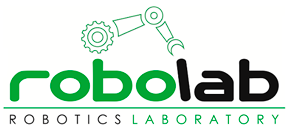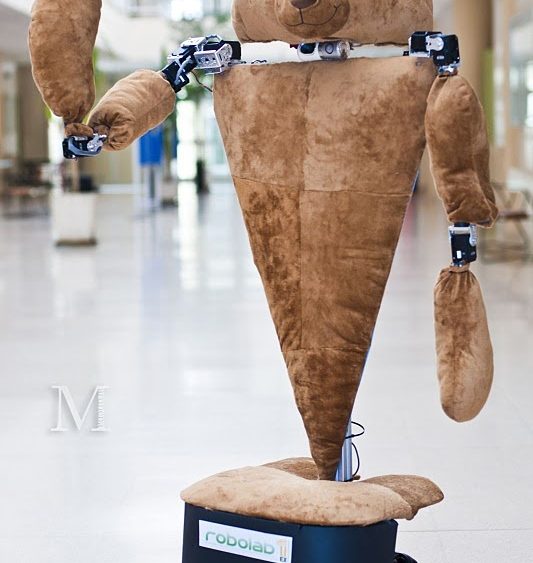[vc_row][vc_column][vc_column_text]Ursus is an assistive robot developed in the Laboratory of Robotics and Artificial Vision of the University of Extremadura in collaboration with the Virgen del Rocío Hospital. It is designed to propose games to children with cerebral palsy in order to improve their recovery. It will also be used as a tool for their therapists. In order to make it visually pleasant for children, it has a friendly height and has been wrapped into the covering tissue of a teddy bear. Patients can get feedback of the status of the exercise in real-time by looking at the image the robot projects on the wall. This information encourages children to correct themselves.
Robolab is building a new robot in collaboration with the Hospital Virgen del Rocío at Sevilla, within the ACROSS project. It is designed to propose games to children with cerebral palsy in order to improve their recovery. It will also be used as a tool for their therapists. In order to make it visually pleasant for children, it has a friendly height and has been wrapped into the covering tissue of a teddy bear. Patients will get feedback of the status of the exercise in real-time by looking at the image the robot projects on a screen or a tv monitor.
Inside this video stream, the robot injects virtual objects signaling the limits of the movements. This augmented reality features are intended to increase the inmersion sensation in the user and to extend the duration of the physical exercises. To achieve the necessary tracking precision of the user arm, URSUS uses its camera under the neck and augmented reality techniques.[/vc_column_text]
[/vc_column][/vc_row]


Comments are closed.